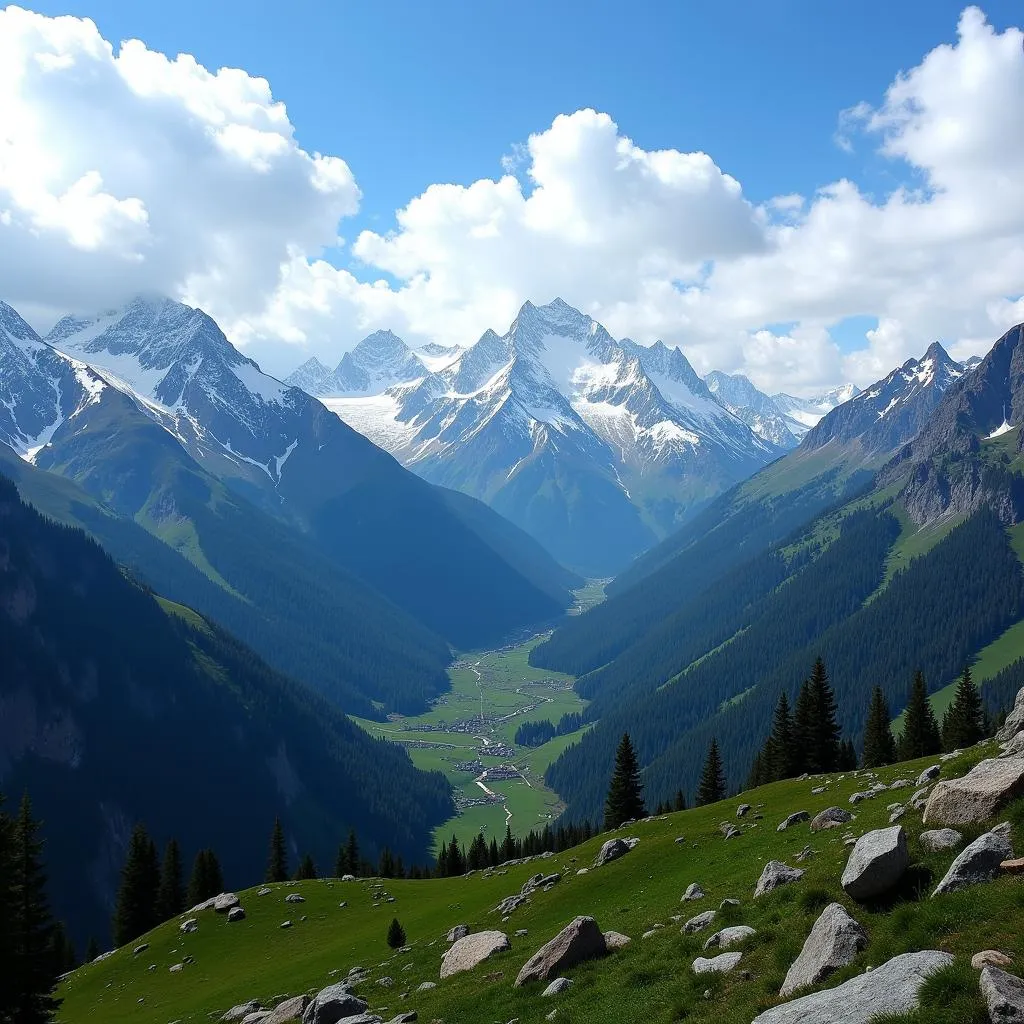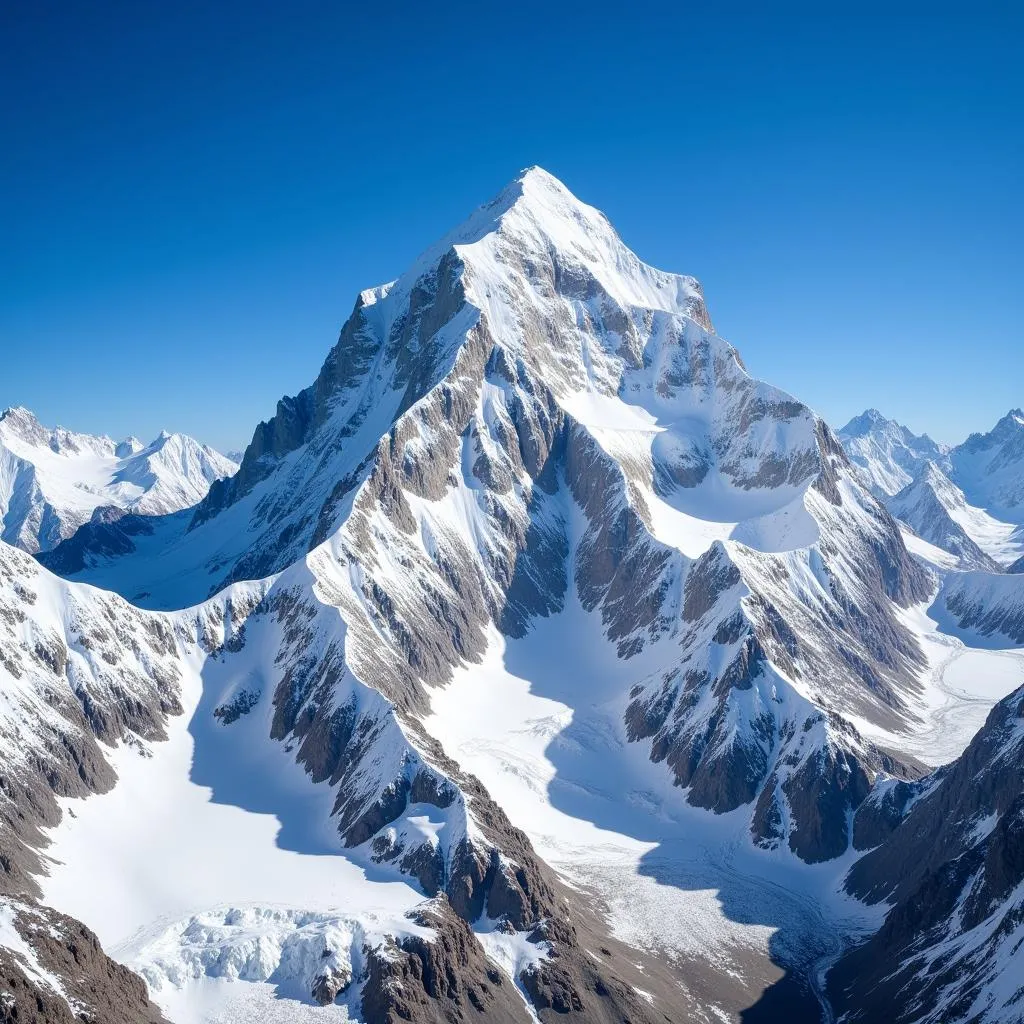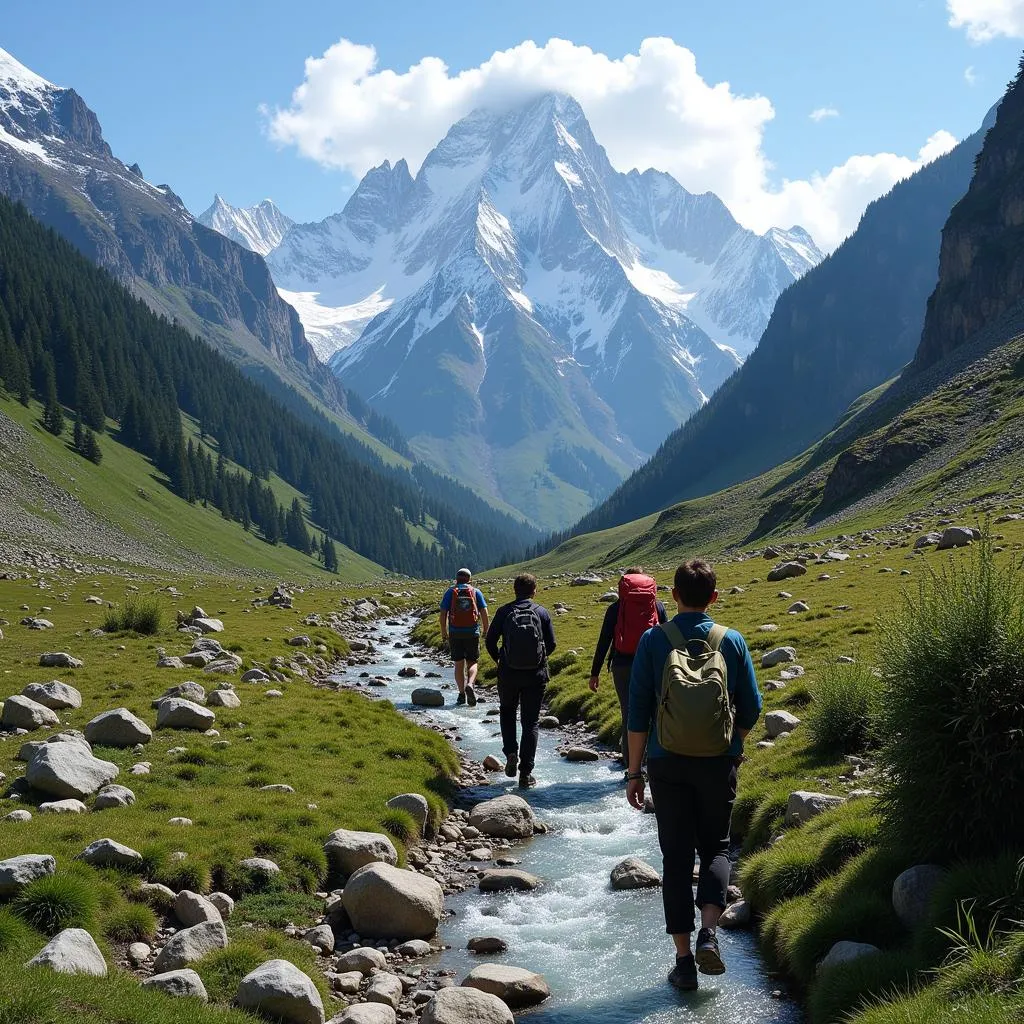Pakistan, often referred to as the “Roof of the World,” boasts a breathtaking landscape dominated by towering peaks, deep valleys, and roaring rivers. This South Asian country is home to an astonishing number of mountains, attracting adventurers and nature enthusiasts from every corner of the globe. But exactly how many mountains are in Pakistan?
 Mountains in Pakistan: An Overview
Mountains in Pakistan: An Overview
Unveiling the Mountain Majesty: More Than Just a Number
While pinpointing the precise number of mountains in Pakistan remains a challenge due to varying definitions of what constitutes a “mountain,” one thing is certain: Pakistan is a paradise for mountaineers and trekkers. The country boasts an impressive count of over 100 peaks soaring above 7,000 meters, including five of the world’s fourteen “eight-thousanders” – mountains exceeding 8,000 meters above sea level.
The Mighty Karakoram: A Playground for Mountaineers
The Karakoram Range, often called the “Black Mountains,” stretches across Pakistan, India, and China, with a significant portion gracing Pakistan’s northern territories. This awe-inspiring range is home to the world’s second-highest peak, K2, standing tall at a staggering 8,611 meters. Other notable peaks in the Karakoram include:
- Gasherbrum I (8,080m): Known as “Hidden Peak”
- Broad Peak (8,051m): A challenging climb for experienced mountaineers
- Gasherbrum II (8,035m): Popular for its relatively straightforward climbing route
 K2 Mountain in Karakoram Range
K2 Mountain in Karakoram Range
These giants attract climbers worldwide, eager to test their limits against these formidable slopes.
Beyond the Karakoram: Exploring Pakistan’s Mountain Ranges
While the Karakoram steals the limelight, Pakistan boasts other significant mountain ranges, each with unique charm and challenges.
The Himalayas: A Symphony of Snow and Stone
The Himalayas, stretching across several Asian countries, extend their grandeur into Pakistan, forming the country’s northern border. Nanga Parbat, at 8,126 meters, proudly claims its place as the ninth-highest mountain globally and the western anchor of the Himalayas. The Himalayan region offers trekkers stunning views of snow-capped peaks, lush green meadows, and pristine glacial lakes.
The Hindu Kush: Where History Meets Heights
The Hindu Kush, spanning over 800 kilometers, forms the western boundary between Pakistan and Afghanistan. This historically significant range, once a crucial route for traders and invaders, is now a haven for trekkers and adventurers seeking off-the-beaten-path experiences. Tirich Mir, the highest peak in the Hindu Kush, stands tall at 7,708 meters.
 Trekkers in Hindu Kush Mountains
Trekkers in Hindu Kush Mountains
More Than Just Peaks: The Impact of Mountains on Pakistan
The presence of these magnificent mountains significantly impacts Pakistan’s climate, culture, and economy. They act as natural barriers, influencing weather patterns and creating diverse microclimates within the country. The mountains are a source of life-giving rivers, providing water for irrigation and hydropower generation. Moreover, the unique flora and fauna found in these mountainous regions contribute to Pakistan’s rich biodiversity.
Conclusion: Embracing the Mountainous Majesty of Pakistan
While the exact number of mountains in Pakistan remains a mystery, their undeniable presence has shaped the country’s identity. From the towering heights of K2 to the serene beauty of the Himalayas, Pakistan’s mountains offer something for everyone. Whether you’re an experienced mountaineer seeking the ultimate challenge or a nature lover yearning for breathtaking landscapes, Pakistan’s “Land of Peaks” promises an unforgettable experience. So, pack your bags, lace up your boots, and prepare to be mesmerized by the unparalleled beauty of Pakistan’s mountains.
FAQs: Unraveling the Mysteries of Pakistan’s Mountains
1. What is the best time to visit Pakistan for trekking and mountaineering?
The ideal time to visit Pakistan’s northern areas for trekking and mountaineering is during the summer months, from June to September, when the weather is relatively stable and the trails are accessible.
2. Do I need a permit to trek or climb in Pakistan’s mountains?
Yes, permits are required for most trekking and climbing expeditions in Pakistan. It is advisable to contact the Alpine Club of Pakistan or a reputable tour operator for permit information and regulations.
3. Is it safe to travel to Pakistan’s mountainous regions?
Pakistan has made significant strides in improving safety and security in recent years. However, it is always recommended to check the latest travel advisories and choose reputable tour operators for a safe and enjoyable experience.
4. What should I pack for a trekking trip to Pakistan’s mountains?
Essential items include sturdy hiking boots, warm clothing layers, a waterproof jacket, a hat, sunscreen, sunglasses, a first-aid kit, and a good quality backpack.
5. Are there accommodation options available in Pakistan’s mountain regions?
Yes, accommodation options range from basic guesthouses and campsites to more comfortable hotels, depending on the location and budget.
For further exploration of Pakistan’s diverse landscapes and travel options, be sure to check out our articles on:
Need help planning your Pakistani mountain adventure? Contact our team at +923337849799, news.pakit@gmail.com, or visit our office at Dera Ghazi Khan Rd, Rakhni, Barkhan, Balochistan, Pakistan. Our 24/7 customer service team is always happy to assist you.